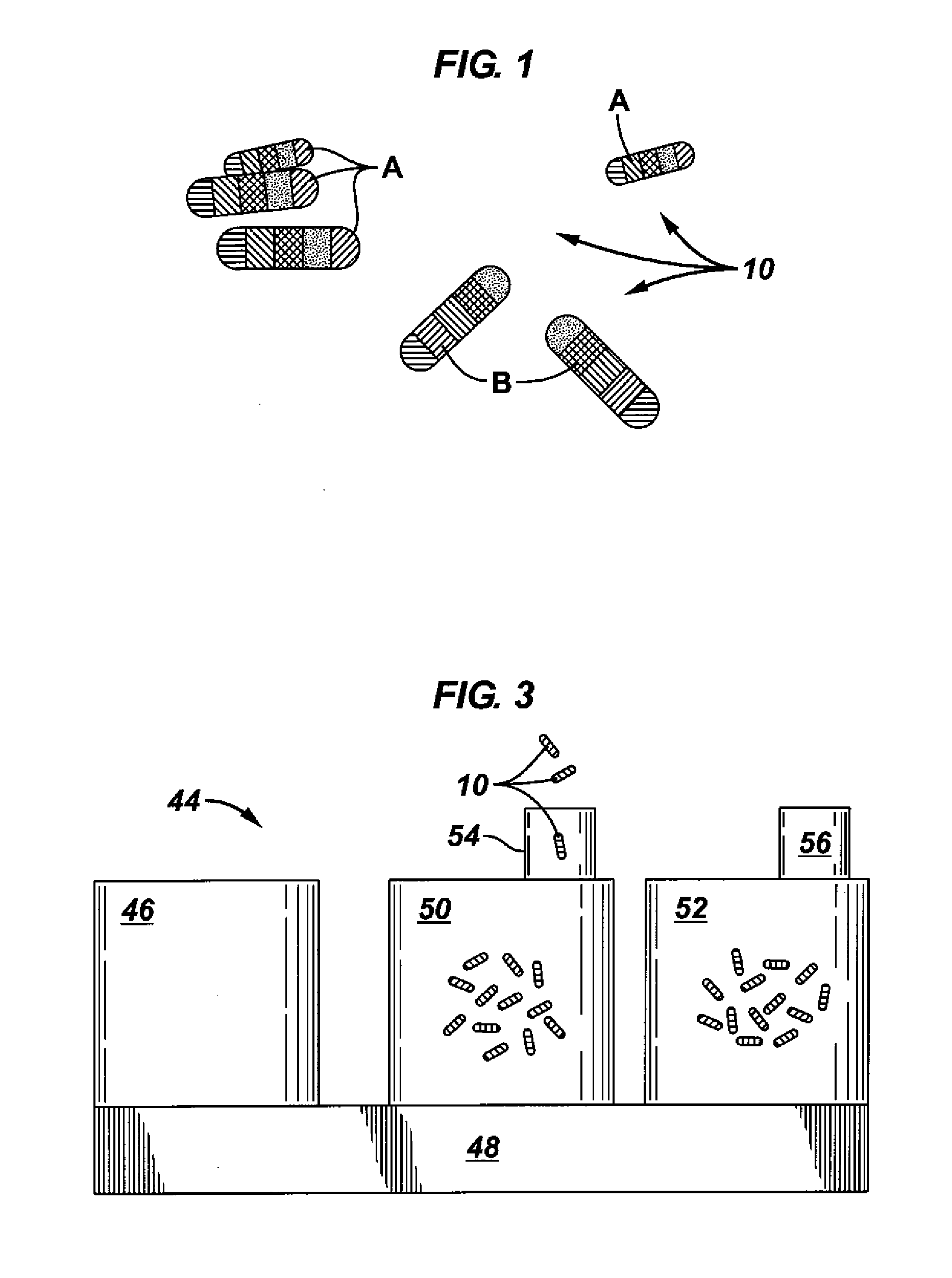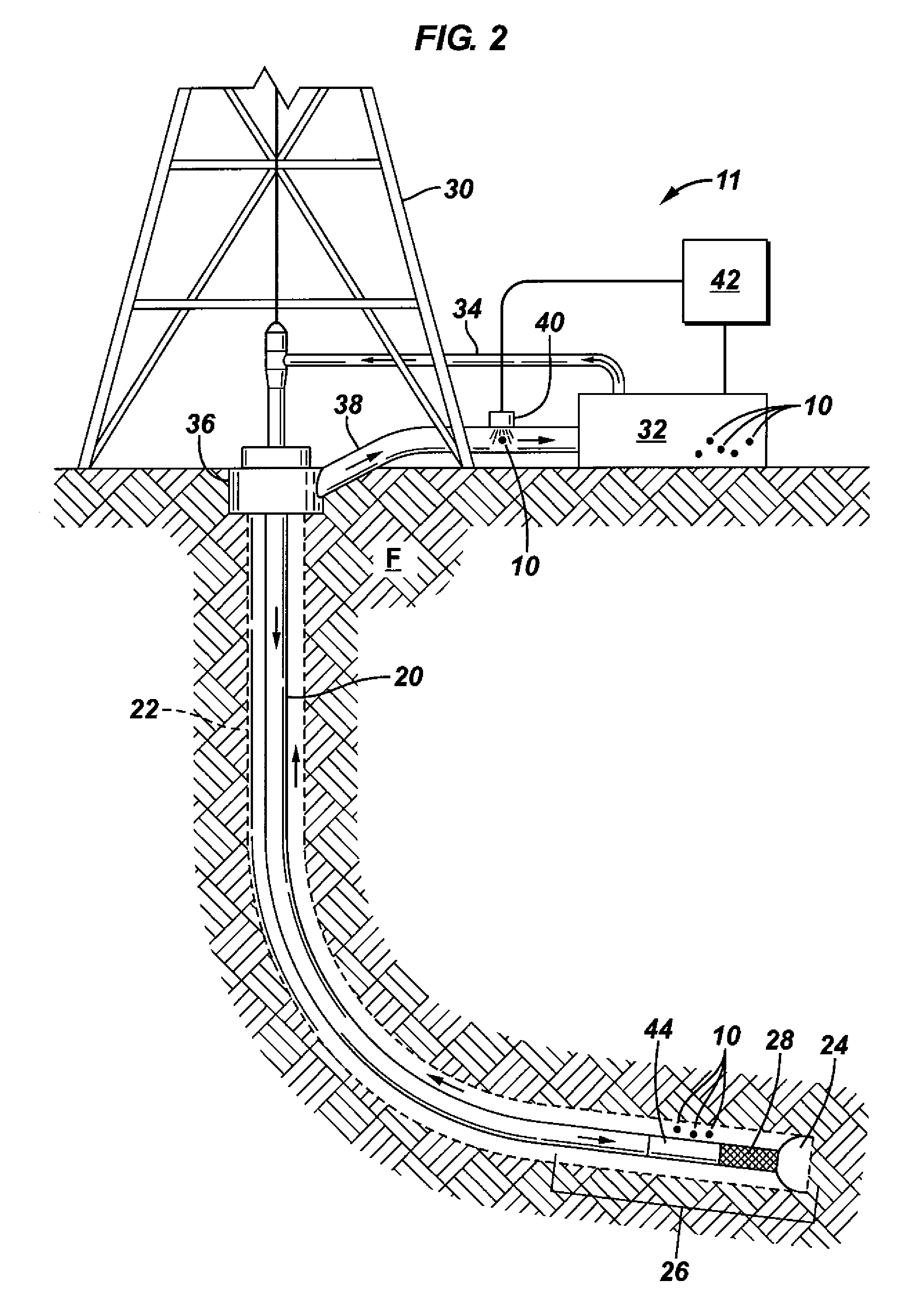Coded optical emission particles for subsurface use
a technology of optical emission particles and subsurface, applied in the direction of instruments, specific gravity measurement, chemical/physical/physical-chemical processes, etc., can solve the problems of limited conventional tracer techniques, inability to use radioactive substances as tracers, and inability to always be possibl
- Summary
- Abstract
- Description
- Claims
- Application Information
AI Technical Summary
Benefits of technology
Problems solved by technology
Method used
Image
Examples
Embodiment Construction
[0019]The present invention comprises the implementation of new coded or tagged particle technology. Aspects of the invention use small particles doped with different substances, such as rare earth elements, that can provide unique patterns of optical emission when excited with the appropriate wavelength radiation. The coded particle technology of the invention is described in M. J. Dejneka et al., Optically active glasses for biology, 3-D display, and telecommunications, Proceedings of the XX ICG International Congress on Glass, Kyoto, Sep. 27 to Oct. 1, 2004; M. J. Dejneka et al., Rare earth-doped glass microbarcodes, Proceedings of the National Academy of Sciences of the United States of America, PNAS, Jan. 21, 2003, vol. 100, no. 2, 389-393 [hereinafter “the Dejneka Papers”], both entirely incorporated herein by reference. Aspects of the invention disclosed herein are based on technology described in great detail by the Dejneka Papers.
[0020]Aspects of the invention entail microm...
PUM
| Property | Measurement | Unit |
|---|---|---|
| thick | aaaaa | aaaaa |
| thick | aaaaa | aaaaa |
| optical emission | aaaaa | aaaaa |
Abstract
Description
Claims
Application Information
 Login to View More
Login to View More - R&D
- Intellectual Property
- Life Sciences
- Materials
- Tech Scout
- Unparalleled Data Quality
- Higher Quality Content
- 60% Fewer Hallucinations
Browse by: Latest US Patents, China's latest patents, Technical Efficacy Thesaurus, Application Domain, Technology Topic, Popular Technical Reports.
© 2025 PatSnap. All rights reserved.Legal|Privacy policy|Modern Slavery Act Transparency Statement|Sitemap|About US| Contact US: help@patsnap.com



